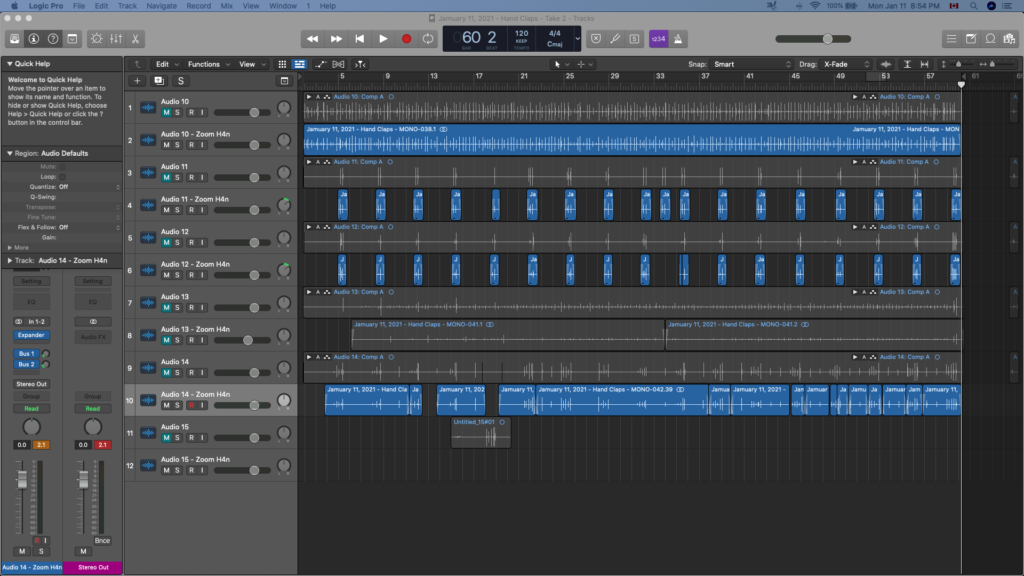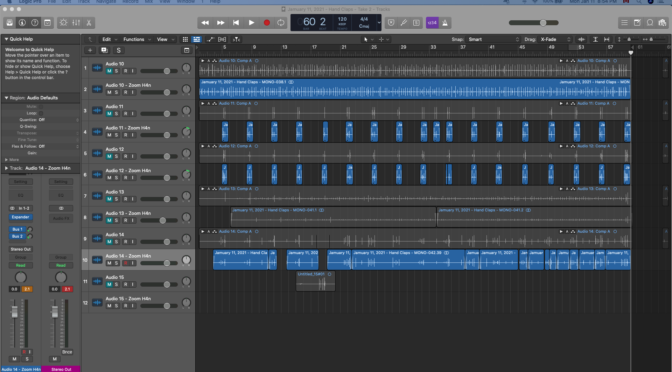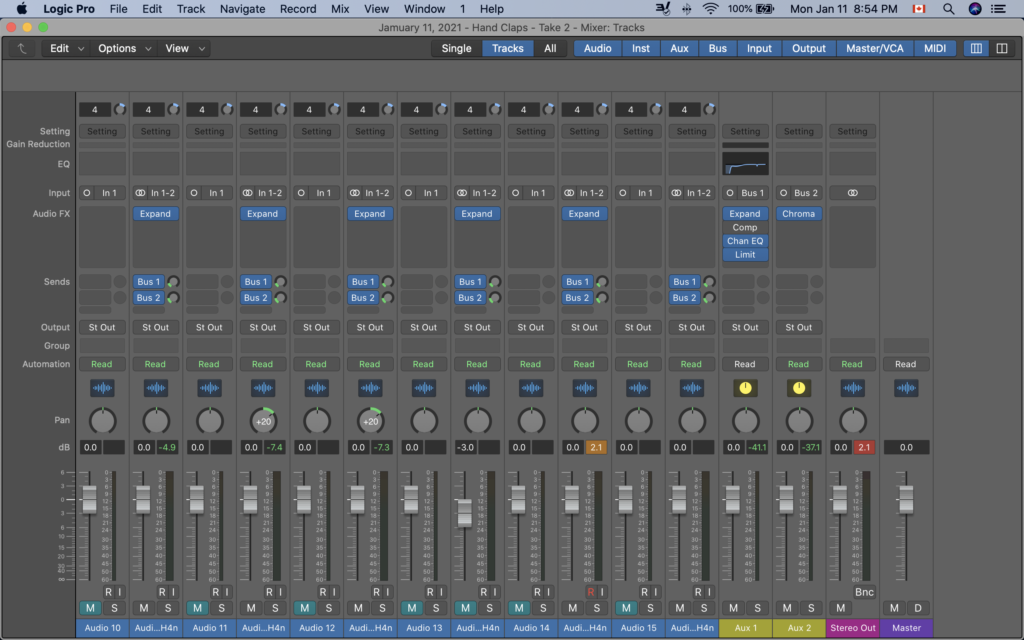This one was supposed to be easy and, to an extent, it was. However, There were many times I tried overcomplicating what should’ve been a straight ahead track.
Today’s challenge was to utilize only claps and clapping, which seemed simple enough given my percussion background. Not only that, but I’ve toyed around with these sounds before so it’s nothing new. But, the challenge came in trying to simplify it yet keep it interesting.
The track has four layers total. I recorded a fifth but found that it muddied up the main rhythm so decided to scrap it.

The first layer is the main rhythm which is a hybrid between the Latin American 3:2 clave and the Ukrainian Kolomejka drum beat. It’s a generic rhythm of sorts only because it appears in so many different places. This rhythm was played with one set of fingers clapping against my palm, a typical, loud clap.
The next two layers are bass-like accents used to accentuate the culmination of a bar or a cycle through the main rhythm. These are panned left and right, at -20 and +20. had I panned them any more they would have been a touch overwhelming so this way you’re not startled by their brief appearance.
The third layer gave me some difficulty because this is where I tried to complicate things. Originally I intended this layer to play off-beats against the main rhythm but culminating in the same accent at the end of one cycle or rhythm. It wasn’t working. Though I recorded it as off-note eighth notes, I fixed it in post to mostly match up with the main rhythm. You may hear one or two of the off-note phrases when they actually matched up.
The fifth layer was another layer of soft claps, fingers against palm, that I thought would add some extra emphasis but, instead, simply muddied the mix. I suppose I could have played with the panning and put it off to one side or even made it switch sides throughout the recording but wasn’t sure the effort would pay off. Instead, I simplified and took it out.
Room noise gave me some trouble in this track, so too outside noise, such as buses and delivery men. I used the Remove Silence feature to remove most of the space in between accents and then, in the mixer, threw on the Expansion plugin set at default values for “More Punch”. I then routed each track to Bus 1 for more expansion, a slight bit of EQ, and the Limiter, before spitting them out to Bus 2 for a touch of reverb. Both sets of sends are set at -25.
Finally, I had to turn down the gain on the main rhythm and the fourth layer so they didn’t get too tiring. You’ll see I also turned down one of the faders on the Mixer, that was for the track I eventually decided to scrap entirely.
One point of pride is that the track didn’t take too long to assemble. I attribute this mostly to the fact that I have had this rhythm in mind for a long time so it was easy enough to write. The timing and post production fixing could have been made easier had I simply taken the time to record properly the necessary accents.
Ah, you might be wondering why so many of my tracks are doubled up in my Tracks view.
The reason is because I have not connected my Zoom H4n to my computer but have opted to keep it separated. By keeping it separate it both removes a burden from the computer and also, I’m shy to admit, allows me to record at a much higher bit rate. I record at 96000 KHz / 24 bit. This… is an unnecessarily high bit rate.
So why am I doing it? On the off chance that maybe one day I’ll re-mix or re-master these and deliver the full crystal clear sound.
But, that does beg the question, do people really want to hear breathes and floor squeaks in an audio track? No, probably not. (For reference, most CDs are delivered at 44100 KHz / 16 bit, MP3s still register at 44100 KHz but are only 320 kbps, which is a lower, compressed version of the audio file.)
This method of recording on a separate device does add another extra step to my workflow and it can add that extra barrier to me wanting to get stuff done. This is something to address going forward but, as I stated at the beginning of the month, I want to use the things available to me and make those work before moving on to anything else. I already see the limitations of this style of working but, since I am a small operation, it doesn’t have to involve a lot of equipment. And so far, it’s worked out pretty well.

